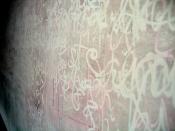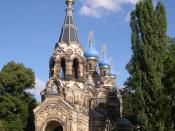Tremont, Ohio A history of Tremont symbolizes the typical urban American neighborhood with its mish-mash of cultures. It offers eclectic sites and adaptive locations for filmmaking. I will look at the history of Tremont as a cultural center of the Midwest before the filming of The Deer Hunter (Figure 3). In addition, I will examine the history of Saint Theodosius Russian Orthodox Cathedral and the history of Lemko Hall to illustrate the eclecticism and adaptability that director, Michael Cimino, tapped in his film. Director Michael Cimino's most powerful, and controversial film work The Deer Hunter examines the uniqueness of this area by focusing its setting on Saint Theodosius Russian Orthodox Church and Lemko Hall.
The original developers of Tremont (Figure 4) were Mrs. Thirza Pelton and John Jennings. They planned to develop the Tremont area into the cultural center of the Midwest. Purchasing 275 acres for the development of Cleveland University, incorporated in 1851, was their start.
The building on the corner of College and University Avenue would be the first and only building constructed for the University. Part of its campus would be Pelton Park, which was surrounded by streets named after the college like Professor, College, University, Literary, and so on. This conglomerate would make up "University Heights". This venture would end two years later, in 1852, when Mrs.
Pelton died along with the loss of her financial support. Tremont still remained and continued to develop into an exclusive area as Pelton and Jennings had intended. "University Heights" continued to progress as an eclectic residential area of Cleveland up until the time of the Civil War. Jennings Avenue, currently ! West Fourteenth Street, was called the Gold Coast of Cleveland. Around the time of this prosperity, the area had become a main stay for the Union Troops. This...


